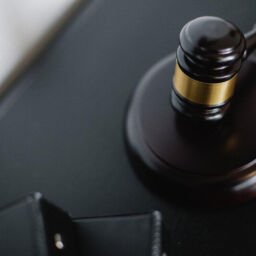Introduction
A word, phrase, design, or symbol that identifies your items, distinguishes them from the products of others and, suggests the source of your items. [1] The Trade Marks Registry turned into set up in 1940 in India and currently, it controls the laws related to trademarks in India. It plays a role as a useful agency and facts centre and is a counsellor in topics regarding trademarks within the country of India. The goal of the Trade Marks Act of 1999 is to record trademarks requested for in the country of India and to offer for higher safety of trademark for items and offerings and additionally to save you from the crooked exercise of the mark. The primary feature of the Registry is to record trademarks that pass for confirmation under the Act and Rules.[2]
“trademark means a mark capable of being represented graphically and which is capable of distinguishing the goods or services of one person from those of others and may include the shape of goods, their packaging, and combination of colours; and—
(i) concerning Chapter XII (other than section 107), a registered trademark or a mark used concerning goods or services to indicate or to indicate a connection in the course of trade between the goods or services, as the case may be, and some person having the right as proprietor to use the mark; and
(ii) concerning other provisions of this Act, a mark used or proposed to be used concerning goods or services to indicate or so to indicate a connection in the course of trade between the goods or services, as the case may be, and some person having the right, either as proprietor or by way of permitted user, to use the mark whether with or without any indication of the identity of that person and includes a certification trademark or collective mark”.[3]
TRADEMARK DISTINCTIVENESS
To function as a trademark, an indicator needs to be distinctive –viz, it needs to manage to figure out the supply of a specific good. In figuring out whether or not a mark is distinctive, the court institution marks into 4 categories, primarily based totally on the connection among the indication and the fundamental product[4]:
(1) fanciful,
(2) suggestive,
(3) descriptive,
(4) generic.
For example, Nyke, a trademark owned by a reputed shoe manufacturer. These companies use the trademark to protect their reputation and to prevent any unauthorized use.
TRADEMARK INFRINGEMENT
“A registered trademark is infringed by a person who, not being a registered proprietor or a person using by way of permitted use, uses in the course of trade, a mark which is identical with, or deceptively similar to, the trademark concerning goods or services in respect of which the trademark is registered and in such manner as to render the use of the mark likely to be taken as being used as a trademark[5]”. The explanation regarding the infringement of trademark can be traced under section 29 of the Trademarks act of 1999. The party owning the entitlement to a specific trademark can seek the consequential parties for the infringement of the trademark. The criteria to determine trademark infringement is “likelihood of confusion”.[6] The employment of a trademark accounts for infringement if it presumably creates consumer confusion concerning the origin of those goods. For Example, if we take the previous example of nyke, if I am producing shoes in the name of Nike, then there can be a scope for consumer confusion regarding the source of products/goods(shoes in this case) and can come under the ambit of trademark infringement.
UPGRAD FILES TRADEMARK INFRINGEMENT SUIT AGAINST SCALER
UpGrad has lodged a petition for infringement of a trademark in opposition to some other tech corporation referred to as Scaler. The petition has been lodged in the High Court of Delhi for defying the intellectual assets referring to the trademark of upGrad. They have additionally appealed compensation of greater than ₹three crore.[7] UpGrad has blamed Scaler for the usage of their logo tag ‘upGrad’ via Google Ads to seem on the pinnacle of the quest consequences on Google seek engine and in flip obtaining illegitimate profit.”On Monday, the High Court of Delhi awarded a temporary injunction on the side of upGrad. The court of law, till in addition notice, has additionally directed Scaler now no longer tender on upGrad’s registered indicators and or its versions the usage of Google Ads broadcast or interchange key-word broadcast,” stated a media release Arjun Mohan, CEO-India, upGrad stated, “The lawsuit will make certain that our logos and intellectual assets are blanketed and also will discourage illegal utilization in future. We have made tremendous investments in constructing our manufacturers and it’s far important that we shield our rights. We also are comparing submitting trademark infringements suits in opposition to different edtech groups indulging in comparable Adword bidding activity.”[8]
Freshly, in a comparable Google AdWords instance, The High Court of Delhi awarded a temporary injunction withinside the favour of journey corporation MakeMyTrip and in opposition to its opponent, HappyEasyGo. In the equal depend and below one in every of its latest decree, the law court additionally commanded Google to obstruct the Google Ads vlog of HappyEasyGo.[9] Further, in one of the different comparable subjects lodged through DRS Logistics, the High Court of Delhi said that “Google can’t absolve themselves from the legal responsibility of making sure that the keyword isn’t an infringement of the trademark.”[10]
RECENT DEVELOPMENTS IN TRADEMARK LAW IN INDIA
To carry Indian trademarks regulation consistent with global practices and to make the certain execution of India’s responsibilities under the TRIPS consensus, India changed the Trade and Merchandise Marks Act of 1958, with the Trade Marks Act of 1999. Some modifications under the 1999 Act are along these lines: logos, for the initial period, were produced filters via registration. The explanation of “trademark” at present consists of image portrayal, structures, packaging, and combos of colours, in that way widening IPR guardianship.[11]
The technique for recording trademarks accelerated through getting rid of the sooner method of Part A and B registration. besides, only one single software wants at this time to be lodged for registration of an indicator in special groups.[12] The duration of registration and restoration has been elevated from 7 to 10 terms. The explanation of “trademark infringement” has been widened to provide safety apart from using similar/comparable logos with regards to items that they’re registered.[13] A motion for trademark infringement /passing-off may be lodged in a district court of law inside whose authority the plaintiff (owner of the trademark) is living or incorporates on business, as in opposition to the earlier. According to the latest regulation, each registered and unregistered trademark may be allowed without/with the amity of the enterprise.[14]
CONCLUSION
The law of trademark offers with the instrument of enlistment, assurance of trademark, and avoidance of false trademark.[15]The regulation also affords for the rights received by enrollment of trademark, modes of transfer and venture of the rights, nature of infringements, consequences for such infringement and remedies to be had to the owner in case of such infringement.
Author(s) Name: Guntupalli Srilatha (Dr. B.R. Ambedkar College of Law, Andhra University)
References:
[1]The trademarks act,1999,sec 2(zb)
[2]` Brief back ground` (ipindia,gov.in) <https://ipindia.gov.in/trade-marks.htm#:~:text=The%20Trade%20Marks,Act%20and%20Rules .> accessed 4 January 2022;
[3] Trademark act,1999, s 2 (zb)(1)(2)
[4] The trademarks act of 1999,s9
[5]ibid,s29(1);
[6] ibid,s 11(1)
[7] upGrad v scaler
[8]upgrad files trademark infringement suit against scaler, <https://www.thehindubusinessline.com/companies/upgrad-files-trademark-infringement-suit-against-scaler/article37785908.ece#:~:text=The%20edtech%20firm%20also,also%20sought%20damages%20of> published on 1 December 2021, accessed 4 January 2022
[9] ibid
[10] ibid
[11] Diljeet Titus & Rai S Mittal, `Recent developments in intellectual property laws in India- Part 2`( Last Updated: Jun 23, 2015, 10:29 AM IST) <https://economictimes.indiatimes.com/small-biz/legal/recent-developments-in-intellectual-property-laws-in-india-part-2/articleshow/47780087.cms?from=mdr#:~:text=Besides%20to%20the,the%20WTO.%20Here> accessed on 4 January 2022
[12] ibid
[13] ibid
[14] ibid
[15] Preamble, Trade Marks Act, 1999
















